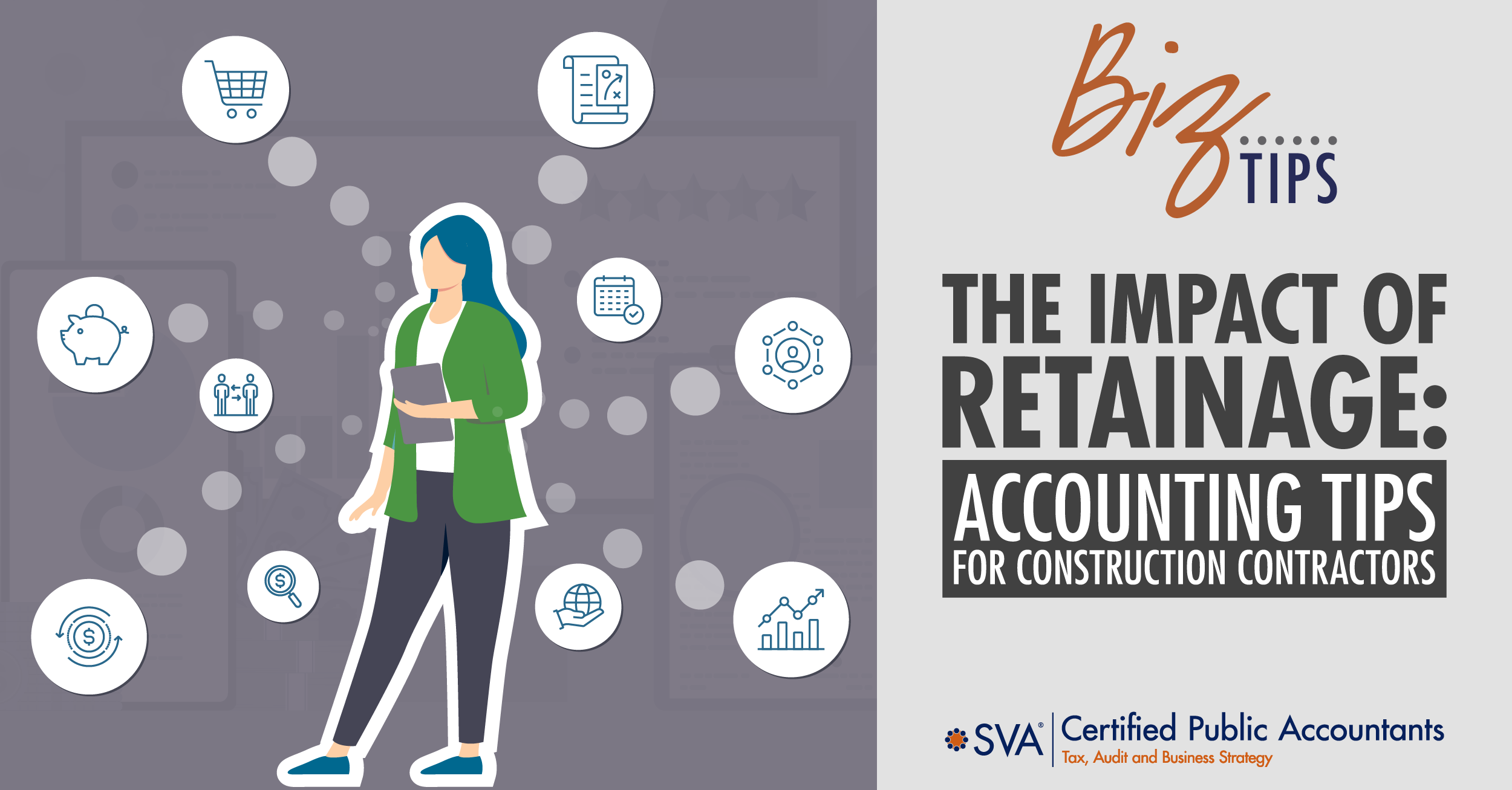| Highlights: |
- Defines retainage in construction as a portion of contract payments withheld until project completion, impacting cash flow and financial reporting for contractors.
- Explains how retainage affects liquidity, tying up earned revenue and creating timing gaps between work performed and cash received.
- Offers practical accounting tips like negotiating retainage terms, tracking aging retainage receivables, and incorporating retainage into cash flow planning.
- Recommends proactive strategies such as setting up retainage reserves and using software to monitor receivables to minimize financial strain.
|
In the construction industry, managing cash flow and accurately tracking revenue are critical to staying profitable and competitive. One unique financial element that construction companies must navigate is retainage—a contractual practice that can significantly impact both liquidity and financial reporting.
While retainage helps ensure project completion and quality for clients, it can also create cash flow challenges for contractors.
What is Retainage?
Retainage is a portion of a construction contract's payment that is withheld by the project owner or general contractor until the project is substantially complete. Retainage amounts typically range between 5% and 10% of the total contract value.
It acts as a safeguard to ensure that the contractor fulfills all obligations, including completing the project to the agreed-upon specifications and addressing any punch-list items or defects.
While retainage protects project owners, it presents unique accounting and cash flow challenges for construction companies, particularly those working on multiple projects simultaneously.
How Retainage Affects Cash Flow
Delayed Access to Earnings
Retainage represents earned revenue that remains unpaid until the project reaches specific milestones, often the end of the project or after warranty periods. This delay ties up cash that could otherwise be reinvested in operations, such as purchasing materials or funding new projects.
Liquidity Strain
For construction companies, the delay in receiving retainage payments can result in a mismatch between expenses incurred and revenues collected. This can create a cash flow gap, making it difficult to cover operational costs or meet payroll obligations.
Compounding Impact on Large or Long-Term Projects
Retainage can have a cascading effect, particularly for businesses with multiple large projects. The cumulative delay in cash inflows can strain overall liquidity, necessitating reliance on lines of credit or other financing to bridge gaps.
(Download Video Transcript)
How to Record Retainage in Financial Statements
Properly accounting for retainage is critical to ensure financial statements are accurate and comply with Generally Accepted Accounting Principles (GAAP). Here's how retainage should be handled:
| On the Balance Sheet |
Retainage receivables on completed jobs are included in Contract Receivables. Retainage receivables on jobs still in progress at the end of a reporting period are included in Contract Assets. |
| On the Income Statement |
Retainage does not directly affect the income statement since it is part of the revenue earned from contracts. However, it impacts the timing of cash inflows, which should be reflected in the cash flow statement. |
| Cash Flow Statement |
Retainage receivables impact the operating activities section of the cash flow statement. Even though revenue is recognized, the delay in cash collection reduces cash flow from operations. This should be closely monitored to avoid liquidity issues. |
Best Practices for Managing Retainage
Negotiate Retainage Terms
Before signing a contract, take the opportunity to negotiate more favorable retainage terms with clients. For example, you might request a lower percentage of retainage—such as 5% instead of 10%—or propose releasing retainage in installments at various project milestones instead of withholding the entire amount until project completion.
Clear communication with clients about your company’s proven track record of successful project delivery can strengthen your case for leniency on retainage terms.
Monitor Aging Retainage Receivables
Keeping track of outstanding retainage receivables is critical to ensuring timely collection. Use accounting or project management software to maintain a detailed schedule of retainage amounts, expected release dates, and collection status.
Follow up with clients proactively to confirm their satisfaction with completed work and ensure they’re prepared to release payments as agreed. Addressing any client concerns or potential disputes early can help avoid payment delays.
Create a Cash Flow Plan
Incorporate retainage into your broader cash flow management strategy by preparing realistic forecasts that account for delayed payments. Use these projections to identify potential shortfalls and explore solutions like credit lines or invoice factoring to bridge gaps.
Additionally, communicate regularly with stakeholders—including subcontractors and suppliers—to align payment expectations and maintain smooth operations during periods of reduced liquidity.
Maintain a Retainage Reserve
Establish a reserve fund specifically for offsetting the impact of delayed retainage payments. Set aside a portion of revenues from each project into this reserve so you have a buffer to cover operational expenses during lean periods.
A disciplined approach to maintaining this reserve can reduce your dependence on external financing and improve your overall financial stability, particularly for businesses managing multiple retainage-heavy contracts.
Nailing Down Your Retainage Strategy
Managing retainage doesn’t have to be a constant headache. While it’s a common practice in construction, a proactive approach can help you stay in control of your cash flow and financial reporting.
Negotiating better terms, keeping a close eye on receivables, planning for cash flow gaps, and setting up a reserve can help you minimize the stress retainage brings to your business.
© 2025 SVA Certified Public Accountants

